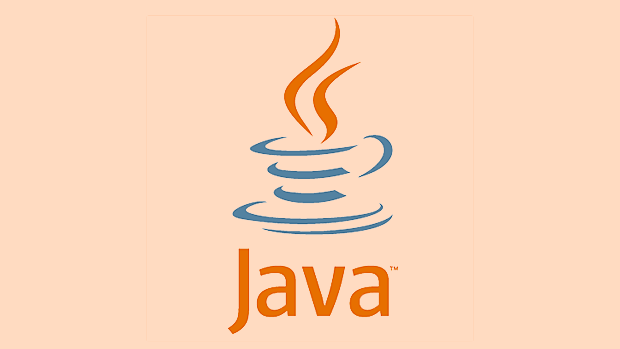Safe Casting and Type Compatibility in Java
Jul 08, 2025 am 01:54 AMThe key to the security of Java type conversion is to match the inheritance relationship and the actual object, and the upward transformation is automatic and safe; the downward transformation requires explicit and instanceof inspection; generics are unreliable due to type erasure; and the interface and implementation classes can be converted.

The Java type system is designed relatively strictly, with the purpose of discovering type errors as much as possible during the compilation period. However, in actual development, we still often need to do type conversion. At this time, "safe type conversion" and "type compatibility" have become issues that must be paid attention to.

This article directly talks about the key point: casting is safe only when two classes have an inheritance relationship and the actual object is an instance of the target type . Otherwise, ClassCastException will occur.

What is type compatibility?
Type compatibility in Java is mainly reflected in inheritance relationships. For example, an object of a subclass can be assigned to the reference variable of the parent class. This is called Upcasting , which is automatically completed and does not require casting.
For example:

Animal a = new Cat(); // Legal, Cat is a subclass of Animal
The other way around is not possible. If you try to assign the object of the parent class to the reference variable of the subclass, you must perform a cast, and the premise is that the object is indeed an instance of the subclass, otherwise an error will be reported at runtime.
Why does cast type conversion go wrong?
There is no problem with casting itself, the problem is that the type mismatch of the actual object . For example, the following code will throw an exception:
Animal a = new Animal(); Cat c = (Cat) a; // throws ClassCastException when running
Although the syntax here is correct, because a actually points to Animal object, not Cat , it fails to force it to Cat .
To avoid this problem, before making a downward transformation, you should first use instanceof to check the actual type of the object:
if (a instanceof Cat) {
Cat c = (Cat) a;
}This ensures the security of transformation.
Type erasure and generic conversion traps
Java generics are implemented through type erasing, which means that at runtime, the generic information will be "erased". For example, List<String> and List<Integer> are actually both List when running. This brings up a problem: you cannot directly make type judgments or conversions on generics.
For example, the following code will report an error:
List<String> list = new ArrayList<>();
if (list instanceof List<Integer>) { ... } // Compile errorBecause the type information no longer exists at runtime, this judgment cannot be completed. This also reminds us that when using generics, we should be extra careful about type conversion and avoid relying on runtime generic information.
Conversion of polymorphism and interface types
In addition to inheritance between classes, interfaces are also an important scenario for type conversion. If a class implements an interface, its objects can be assigned to the reference variable of the interface:
Animal a = new Cat(); // Class inheritance Runnable r = new Thread(); // Interface implementation
Similarly, if you want to transition from an interface reference variable to a concrete class, you also need to check if the types match:
if (r instanceof Thread) {
Thread t = (Thread) r;
}Such conversion is safe as long as the actual objects match.
Basically that's it. Type conversion is common in Java, but it is easy to make mistakes without paying attention to type compatibility and the real type of runtime objects. Remember a few key points:
- Upward transformation is automatically completed, safe
- Downward transformation must be explicit and must be coordinated with
instanceof - Generics are not reliable at runtime, don't rely on them to make type judgments
- Interfaces and implementation classes can also be converted, the logic is the same
Once you master these details, you will have a lot of thought when writing code.
The above is the detailed content of Safe Casting and Type Compatibility in Java. For more information, please follow other related articles on the PHP Chinese website!

Hot AI Tools

Undress AI Tool
Undress images for free

Undresser.AI Undress
AI-powered app for creating realistic nude photos

AI Clothes Remover
Online AI tool for removing clothes from photos.

Clothoff.io
AI clothes remover

Video Face Swap
Swap faces in any video effortlessly with our completely free AI face swap tool!

Hot Article

Hot Tools

Notepad++7.3.1
Easy-to-use and free code editor

SublimeText3 Chinese version
Chinese version, very easy to use

Zend Studio 13.0.1
Powerful PHP integrated development environment

Dreamweaver CS6
Visual web development tools

SublimeText3 Mac version
God-level code editing software (SublimeText3)

Hot Topics
 What is a Singleton design pattern in Java?
Jul 09, 2025 am 01:32 AM
What is a Singleton design pattern in Java?
Jul 09, 2025 am 01:32 AM
Singleton design pattern in Java ensures that a class has only one instance and provides a global access point through private constructors and static methods, which is suitable for controlling access to shared resources. Implementation methods include: 1. Lazy loading, that is, the instance is created only when the first request is requested, which is suitable for situations where resource consumption is high and not necessarily required; 2. Thread-safe processing, ensuring that only one instance is created in a multi-threaded environment through synchronization methods or double check locking, and reducing performance impact; 3. Hungry loading, which directly initializes the instance during class loading, is suitable for lightweight objects or scenarios that can be initialized in advance; 4. Enumeration implementation, using Java enumeration to naturally support serialization, thread safety and prevent reflective attacks, is a recommended concise and reliable method. Different implementation methods can be selected according to specific needs
 How to analyze a Java heap dump?
Jul 09, 2025 am 01:25 AM
How to analyze a Java heap dump?
Jul 09, 2025 am 01:25 AM
Analyzing Java heap dumps is a key means to troubleshoot memory problems, especially for identifying memory leaks and performance bottlenecks. 1. Use EclipseMAT or VisualVM to open the .hprof file. MAT provides Histogram and DominatorTree views to display the object distribution from different angles; 2. sort in Histogram by number of instances or space occupied to find classes with abnormally large or large size, such as byte[], char[] or business classes; 3. View the reference chain through "ListObjects>withincoming/outgoingreferences" to determine whether it is accidentally held; 4. Use "Pathto
 What is a ThreadLocal in Java?
Jul 09, 2025 am 02:25 AM
What is a ThreadLocal in Java?
Jul 09, 2025 am 02:25 AM
ThreadLocal is used in Java to create thread-private variables, each thread has an independent copy to avoid concurrency problems. It stores values ??through ThreadLocalMap inside the thread. Pay attention to timely cleaning when using it to prevent memory leakage. Common uses include user session management, database connections, transaction context, and log tracking. Best practices include: 1. Call remove() to clean up after use; 2. Avoid overuse; 3. InheritableThreadLocal is required for child thread inheritance; 4. Do not store large objects. The initial value can be set through initialValue() or withInitial(), and the initialization is delayed until the first get() call.
 Java Optional example
Jul 12, 2025 am 02:55 AM
Java Optional example
Jul 12, 2025 am 02:55 AM
Optional can clearly express intentions and reduce code noise for null judgments. 1. Optional.ofNullable is a common way to deal with null objects. For example, when taking values ??from maps, orElse can be used to provide default values, so that the logic is clearer and concise; 2. Use chain calls maps to achieve nested values ??to safely avoid NPE, and automatically terminate if any link is null and return the default value; 3. Filter can be used for conditional filtering, and subsequent operations will continue to be performed only if the conditions are met, otherwise it will jump directly to orElse, which is suitable for lightweight business judgment; 4. It is not recommended to overuse Optional, such as basic types or simple logic, which will increase complexity, and some scenarios will directly return to nu.
 How to fix java.io.NotSerializableException?
Jul 12, 2025 am 03:07 AM
How to fix java.io.NotSerializableException?
Jul 12, 2025 am 03:07 AM
The core workaround for encountering java.io.NotSerializableException is to ensure that all classes that need to be serialized implement the Serializable interface and check the serialization support of nested objects. 1. Add implementsSerializable to the main class; 2. Ensure that the corresponding classes of custom fields in the class also implement Serializable; 3. Use transient to mark fields that do not need to be serialized; 4. Check the non-serialized types in collections or nested objects; 5. Check which class does not implement the interface; 6. Consider replacement design for classes that cannot be modified, such as saving key data or using serializable intermediate structures; 7. Consider modifying
 How to iterate over a Map in Java?
Jul 13, 2025 am 02:54 AM
How to iterate over a Map in Java?
Jul 13, 2025 am 02:54 AM
There are three common methods to traverse Map in Java: 1. Use entrySet to obtain keys and values at the same time, which is suitable for most scenarios; 2. Use keySet or values to traverse keys or values respectively; 3. Use Java8's forEach to simplify the code structure. entrySet returns a Set set containing all key-value pairs, and each loop gets the Map.Entry object, suitable for frequent access to keys and values; if only keys or values are required, you can call keySet() or values() respectively, or you can get the value through map.get(key) when traversing the keys; Java 8 can use forEach((key,value)->
 Python web scraping dynamic content
Jul 10, 2025 pm 12:18 PM
Python web scraping dynamic content
Jul 10, 2025 pm 12:18 PM
Dynamic web crawling can be achieved through an analysis interface or a simulated browser. 1. Use browser developer tools to view XHR/Fetch requests in the Network, find the interface that returns JSON data, and use requests to get it; 2. If the page is rendered by the front-end framework and has no independent interface, you can start the browser with Selenium and wait for the elements to be loaded and extracted; 3. In the face of the anti-crawling mechanism, headers should be added, frequency control, proxy IP should be used, and verification codes or JS rendering detection should be carried out according to the situation. Mastering these methods can effectively deal with most dynamic web crawling scenarios.
 Comparable vs Comparator in Java
Jul 13, 2025 am 02:31 AM
Comparable vs Comparator in Java
Jul 13, 2025 am 02:31 AM
In Java, Comparable is used to define default sorting rules internally, and Comparator is used to define multiple sorting logic externally. 1.Comparable is an interface implemented by the class itself. It defines the natural order by rewriting the compareTo() method. It is suitable for classes with fixed and most commonly used sorting methods, such as String or Integer. 2. Comparator is an externally defined functional interface, implemented through the compare() method, suitable for situations where multiple sorting methods are required for the same class, the class source code cannot be modified, or the sorting logic is often changed. The difference between the two is that Comparable can only define a sorting logic and needs to modify the class itself, while Compar






